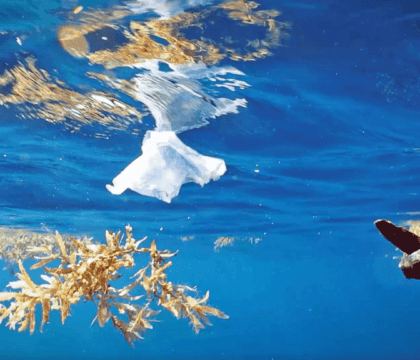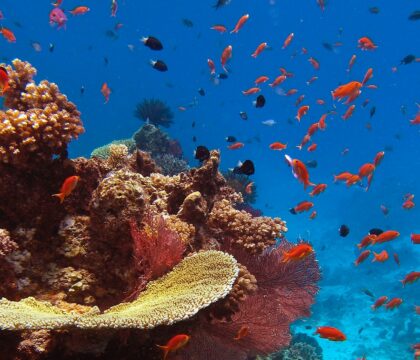July 6, 2020 • COVID-19, News Announcements
Are you ready to book your next adventure after months of virtual trips from your living room, but also concerned about COVID-19 safety? We know the feeling! Beyond the usual mask wearing, hand washing, no face touching, and social distancing recommended by the WHO, what can and should we do to help stay safe while flying? To help you better plan and prepare, Oceanic Society has researched and compiled the following tips to flying safely during COVID-19.
Planning Your Flight: Things to Know and Do
The more accurate and up-to-date information you have, the more prepared you will be for unexpected situations when traveling and the better you will understand where real risks to your safety lie. There is still much uncertainty around COVID-19, and many countries, states, and regions will be regularly updating their entry regulations and travel restrictions. Be sure to directly contact your airline, hotel, and travel provider and make sure you are up-to-date on needs as you plan your adventure. For instance, some countries may require proof of a negative COVID-19 test prior to arrival. Keep in mind that rules that were in place when you booked your trip may have changed and should be rechecked just prior to leaving. Some recommendations to help you stay informed include:
- Stay up to date.
- Check the COVID-19 Country Specific Information from the U.S. Department of State, as well as this regularly updated resource, for current information about travel restrictions and requirements.
- Download your airline’s app to get up to date information about your flight and access to your mobile boarding pass for contactless check-in. Review specific boarding instructions, special guidelines for luggage handling, connecting flights, security screening, and customs needs.
- Check the airport website for information on transportation drop-off or pick-up, and on-site parking. In some cases, airport parking shuttle bus service may be suspended. If possible, it’s best to have someone from your household drop you off and pick you up. Allow extra time on your day of departure.
- Plan to get tested. For international travel you will likely need to get tested for COVID-19 within 72 hours of departure. CVS, local municipalities, and many healthcare providers can do the testing for you. And if you are sick, don’t travel.
- Choose your seat. If you have a choice when booking your flight, choose a window seat. According to research from Emory University, it may reduce your contact with others who might be sick.
- Allow extra time. Keeping people safe in airports and on airplanes requires a range of extra measures, many that take extra time. Plan to arrive at the airport a bit earlier than normal to avoid problems, arrive a bit early to your gate for boarding, and be prepared for a potentially slow exit from the airport in case arrival screening is required.
Getting Ready for Your Flight: What to Bring
- Face masks / covers. Be sure to pack and wear masks or reusable face covers during all stages of your travel. Almost all airports and airlines require passengers to wear a mask the whole time, except when consuming food. Masks also help to prevent you from touching your face.
- Hand sanitizer. Bring enough hand sanitizer for the duration of your trip. TSA is now allowing each traveler to carry on one container of hand sanitizer up to 12 ounces (about 350 milliliters). You can pack additional hand sanitizer in your checked baggage if needed.
- Disinfecting wipes. Bring enough disinfecting wipes for the duration of your trip. These can be used to clean and disinfect your seat on the plane and any other seats, tables, or surfaces used in transit.
- Food and drink. If you must eat on the plane, be prepared to pack your own snack and beverage (ever thought about putting frozen coffee cubes in an insulated bottle?) and make sure it’s easily taken out during security check.
- Reusable utensils. Limited food concessions have takeout service available at the airport. We always recommend that you bring your own reusable utensils (with round-bladed knives for carry-on) to reduce single use plastic during your trip, and they also may reduce your exposure to foreign contaminants.
- Thermometer. Although coronavirus can affect people in many different ways, fever is one of the most common coronavirus symptoms. Pack a thermometer to monitor your temperature regularly when in doubt.
- Sweatshirt, scarf, headphones, travel pillow. To avoid using in-flight amenities such as blankets, pillows, and headphones (which may no longer be offered), be sure to bring your own.
- Mobile boarding pass and contactless payment. Having your paperless boarding pass on a mobile device or printing your boarding pass at home, as well as using contactless payment from your phone or credit card will help ensure a smooth transition at the airport.
In the Airport & On the Plane: Staying Safe in Transit
- Masks & social distancing. Always wear your mask and maintain social distance. Although we recognize that social distancing is not possible on the plane, maintaining distance from other people while in transit can help reduce your risk of exposure. Minimizing your need for assistance and service will also reduce the frequency with which you interact with people who could be sick.
- Hand washing. Wash or sanitize your hands as frequently as possible while in transit, especially after touching a foreign surface.
- New procedures and precautions.
- Airports will now have plexiglass shields positioned at check-in counters, security checkpoints, customs desks, retail shops, food and beverage concessions, information desks, and more.
- Prior to TSA security screening, leave an empty pocket or compartment in your carry-on to put your wallet, belt, watch, phone, and other personal items to avoid sharing plastic bins with others.
- Many airlines have new boarding procedures that board fewer people at a time, and some board back to front in order to keep social distance.
- Many airport lounges may stay closed or, if open, will no longer provide food and will have limited capacity.
- Bathrooms. Try to use the bathroom prior to boarding to avoid the tiny confined lavatory on the plane. In the bathroom, refrain from touching any surface directly by using toilet paper to cover your hand, be sure to close the lid before you flush, and wash your hands. Don’t spend more time in the bathroom than needed. Airlines are also cleaning bathrooms on a much more regular basis.
- Clean your space. As an extra precaution when you reach your seat, wipe down the areas that you will touch with disinfecting wipes, including the head and arm rests, the seat belt buckle, remote, screen, seat back pocket, tray table, and even the whole seat.
Upon Arrival or While Connecting Internationally: What to Expect
With all of the new social distancing measures, health screening checks, and COVID negative certifications now needed when you enter a country, many international travelers have reported long delays to clear immigration and customs upon arrival. Be prepared for the international arrival and entry process to take much longer than in the past. Be patient, carry water with you, have all of your required entry information organized and accessible, and expect to have your documents checked, temperature taken multiple times, and to possibly be taken aside for additional questioning. Because of this, you may also need to allow more time between connecting flights if your arrival city is not your final destination.
Final Reminder: Be Nice, We’re All in this Together
It might seem as if there are so many new things required of you as you return to flying. But really, with a few simple adjustments you will be able to once again resume traveling and be at relatively minimum risk. Things will continue to improve, hopefully faster than we expect. Everyone in the world is learning and adapting to the changes in our lives amid the COVID-19 pandemic, and that includes other travelers, flight attendants, TSA, ground staff, drivers, hotel staff, restaurant workers, and tour guides… just to name a few. All are working tirelessly to make traveling possible again for everyone. Do your best to plan ahead and budget extra time; keeping everyone safe will take time. Be nice, patient, appreciative, wash your hands, and wear your mask to protect yourself and others.
Now you are ready for takeoff!
The information in this post is updated as of July 7, 2020. It is not intended to be comprehensive, but rather to inform you of actions you can take to increase your safety as you prepare to return to flying. While Oceanic Society will try to keep our information as up-to-date as possible, we also encourage travelers to stay informed on news and recommendations for their own communities by using the CDC, WHO, and their local public health department as resources.




